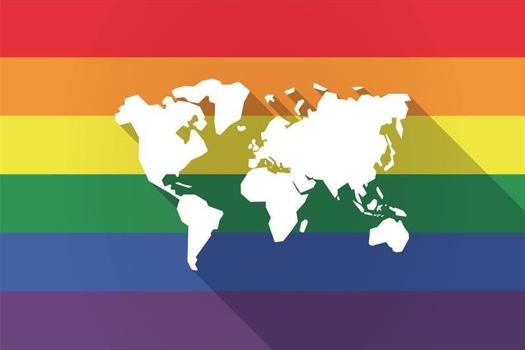There’s a saying that goes: 'people will forget what you said, forget what you did, but never forget how you made them feel'. This has never been truer than with LGBT+ (Lesbian, Gay, Bi, Trans and other (+) people of sexual orientations and identities) employees.
HR departments may suffer from Guardian Reader Syndrome (GRS). I first used this tongue-in-cheek metaphor as head of diversity for the London Olympics and Paralympics. HR is full of good people who have gay friends. But when pushed to see how they would feel if their own son was gay, rather than someone else’s son, or if their own daughter was dating a woman rather than a man, the limits of progressiveness and niceness are tested.
Hundreds of people in ‘liberal’ and ‘progressive’ professions have similar outlooks and are absolutely convinced they are colourblind, that they ‘don’t discriminate’, that they treat everyone ‘the same’. The fact is we all have biases, and the world is not a level playing field. Saying you treat all people the ‘same’ is a misnomer when people are intrinsically different – treating different people ‘the same’ leads to inequitable outcomes. The notion that you can ‘be objective’ is not plausible.
This climate of seeming acceptance and tolerance is seductive and dangerous. Thinking and feeling is not enough. It is doing that creates inclusion. There are no medals simply for having gay best friends. The cold hard fact is that a better world does not ‘just happen’. People make it happen. And the appalling silence (or inaction) of the good people can actually prevent it from happening.
When there has been an obvious problem, such as discrimination against gay people in the military, there has been an intentional focus on correction. But in supposed ‘liberal’ sectors such as the media and arts there remains a great deal of complacency, and they remain a long way from real inclusion. This is the exact opposite of what many people in those sectors believe.
Most people in HR want to do the right thing most of the time. Here are three ways you can check you are truly LGBT+ inclusive. It’s largely about reconciling HR systems, processes and consistency with treating people as individuals:
1. Check all policies and procedures and then promote them
The basis of credibility with LGBT+ people will be whether you walk the talk. Do you have equal policies and benefits? A quick way to check is the Stonewall Workplace Equality Index, which will take you through the various policies as well as benchmark you against other organisations. Then you need to promote your policies and results to demonstrate commitment and ensure take-up.
2. Audit your recruitment and employee value proposition
LGBT+ people won't assume you are gay-friendly unless you tell them. So how you market and position your organisation in the recruitment space is vital. Take advantage of platforms such as Stonewall’s jobs board or use specialist agencies like Diversity Jobs. Even when you use mainstream or alternative channels make a point of expressing your diversity and inclusion commitment and culture.
Remember that being LGBT+ friendly in your communications and marketing doesn’t just pay dividends in attracting gay talent. It is viewed favourably by other minority groups too as it shows you value difference. It may also help existing LGBT+ staff to come out if they are in the closet as they will have increased trust and confidence in their employer.
3. Move from homogenous talent management (HTM) to inclusive talent management (ITM)
HTM is talent management that fails to account for, or benefit from, difference. ITM is the opposite and is still too infrequently practised in organisations. In the annual promotion cycle, for example, frame the nine-box grids positively in terms of actively seeking diversity rather than assuming they will automatically select the best people. These processes are inherently flawed and need conscious inclusive leadership to make them more objective.
For example, KPMG includes the current demographic diversity of the team and target zones as a ‘nudge’ in the decision-making room to remind people about the consequences of selecting sameness and the opportunity of choosing diversity.
HR can support LGBT+ people proactively and strategically. In doing so it builds its reputation as a thought leader and strategic visionary for the wider business.
Stephen Frost is the founder of Frost Included, a consultancy dedicated to helping people understand diversity and inclusion. His latest book, Inclusive Talent Management – How business can thrive in an age of diversity, is out now









